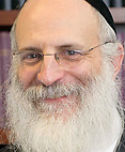Serous endometrial cancers that mimic endometrioid adenocarcinomas: A clinicopathologic and immunohistochemical study of a group of problematic cases Journal Article
| Authors: | Darvishian, F.; Hummer, A. J.; Thaler, H. T.; Bhargava, R.; Linkov, I.; Asher, M.; Soslow, R. A. |
| Article Title: | Serous endometrial cancers that mimic endometrioid adenocarcinomas: A clinicopathologic and immunohistochemical study of a group of problematic cases |
| Abstract: | Background: Uterine serous carcinomas (USCs) can exhibit an architecturally well-differentiated tubuloglandular morphology with or without an accompanying papillary growth pattern. These features make it difficult to distinguish USCs from endometrial endometrioid carcinomas (EECs). Given the aggressive behavior of USC, compared with EEC, and differences in management, it is important to correctly classify endometrial carcinomas that exhibit a tubuloglandular architecture with high nuclear grade. We sought an immunohistochemical panel to minimize subjectivity in the distinction of USC from EEC. Materials and Methods: We identified 8 problematic endometrial cancers, exhibiting a tubuloglandular growth pattern and high nuclear grade, whose classification as EEC or USC was debated or resulted in disagreement. We selected 13 cases of International Federation of Gynecology and Obstetrics (FIGO) grade 2 EEC and 16 cases of USC as controls. An immunohistochemical panel, including p53, β-catenin, cyclin D1, estrogen receptor (ER), progesterone receptor (PR), and PTEN, was evaluated. Results: As a group, the clinical features and immunoprofile of the study cases resembled those of the serous controls. The study cases expressed p53, β-catenin, cyclin D1, and ER and PR, and showed loss of PTEN in 75%, 12.5%, 0%, 37.5%, 37.5%, and 12.5% of cases, respectively. p53, β-catenin, cyclin D1, ER and PR expression, and PTEN loss were seen in 87.5%, 0%, 19%, 31%, 12%, and 0% of the serous controls and in 7%, 70%, 54%, 92%, 92%, and 61.5% of the endometrioid controls, respectively. The combination of lack of p53 expression, positive PR expression, and loss of PTEN best distinguished between EEC and USC using discriminant analysis (multivariate P = 0.008, <0.001, and 0.05, respectively). Conclusion: In endometrial carcinomas exhibiting high nuclear grade and low architectural grade, using a panel of immunohistochemical stains may facilitate the distinction of USC from EEC. Our clinical and immunohistochemical data also support the concept that there is a group of endometrial adenocarcinomas composed of tubular glands that are indeed serous carcinomas. |
| Keywords: | immunohistochemistry; adult; clinical article; controlled study; human tissue; protein expression; aged; aged, 80 and over; middle aged; clinical feature; histopathology; cancer staging; follow up; endometrioid carcinoma; endometrial neoplasms; adenocarcinoma; diagnosis, differential; tumor markers, biological; protein p53; tumor suppressor proteins; phosphatidylinositol 3,4,5 trisphosphate 3 phosphatase; pten phosphohydrolase; tumor suppressor protein p53; receptors, progesterone; cystadenocarcinoma, serous; cancer classification; estrogen receptor; progesterone receptor; pten; cyclin d1; beta catenin; carcinoma, endometrioid; phosphoric monoester hydrolases; p53; uterus carcinoma; β-catenin; uterine serous carcinoma; humans; human; female; article |
| Journal Title: | American Journal of Surgical Pathology |
| Volume: | 28 |
| Issue: | 12 |
| ISSN: | 0147-5185 |
| Publisher: | Lippincott Williams & Wilkins |
| Date Published: | 2004-11-01 |
| Start Page: | 1568 |
| End Page: | 1578 |
| Language: | English |
| DOI: | 10.1097/00000478-200412000-00004 |
| PROVIDER: | scopus |
| PUBMED: | 15577675 |
| DOI/URL: | |
| Notes: | Am. J. Surg. Pathol. -- Cited By (since 1996):60 -- Export Date: 16 June 2014 -- CODEN: AJSPD -- Source: Scopus |
Altmetric
Citation Impact
BMJ Impact Analytics
Related MSK Work





